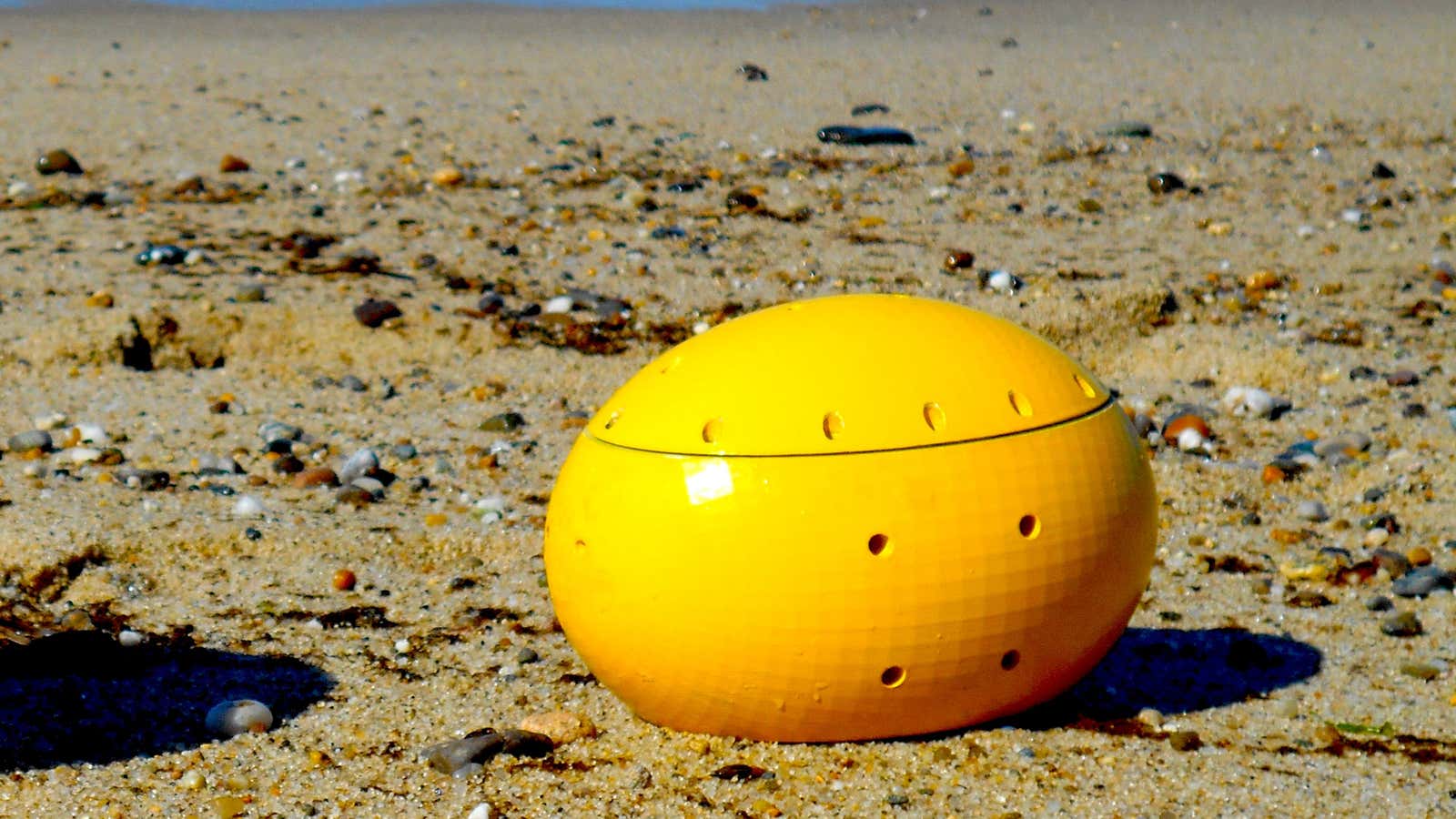Just in time for Halloween: There’s a new robot in development that looks a lot like a decorative gourd that could one day buzz around our oceans on its own, mapping out the surfaces of the planet that we know so little about.
The robot was developed by Hydroswarm, a company founded by MIT engineering PhD candidate Sampriti Bhattacharyya, and is called EVE—much like another ovoid exploratory robot. According to New Scientist, Bhattacharyya’s robot is a finalist in the MassChallenge Awards, which doles out $1.5 million in grant money to develop new startups. The EVE, which was showcased recently at the TechCrunch Disrupt conference in San Francisco, would be able to putter around seabeds, mapping their topography, rather like a waterproof Roomba. “We will be the Google Maps of the ocean,” Bhattacharyya said at TechCrunch.
But our oceans are massive. They cover roughly 70% of the Earth’s surface, and according to the US National Ocean Service, we’ve explored less than 5% of them, so one small robot won’t be able to make much of a dent. But the EVE is meant to work with other EVEs, swarming to cover large swaths of the ocean at one time, sending information back and forth to each other. “It can be operated as a single drone or as a kind of sensor network,” Bhattacharyya told New Scientist.
Autonomous underwater robots already exist—such as the ones used by the Australian government to search for the wreckage of the still-missing Malaysia Airlines flight 370 plane—though they don’t have the swarming, internet-of-things teamwork approach to seabed mapping that the EVE would. As New Scientist points out, the EVEs could also be used as monitoring devices for ocean-based activities—they could check to see if oil rigs are operating properly (something that would have been useful in the Gulf of Mexico), or if the water’s pH balance has changed, or the condition of underwater pipes. They could then alert humans to any issues they see.
For now, the EVE faces some challenges, including being able to communicate effectively between a lot of robots underwater, and a battery life of only about two and a half hours, meaning deepwater trips would be pretty short. Hydroswarm wasn’t immediately available for comment on how it plans to surmount these challenges, but Bhattacharyya told New Scientist that her robots will be in the water soon.




